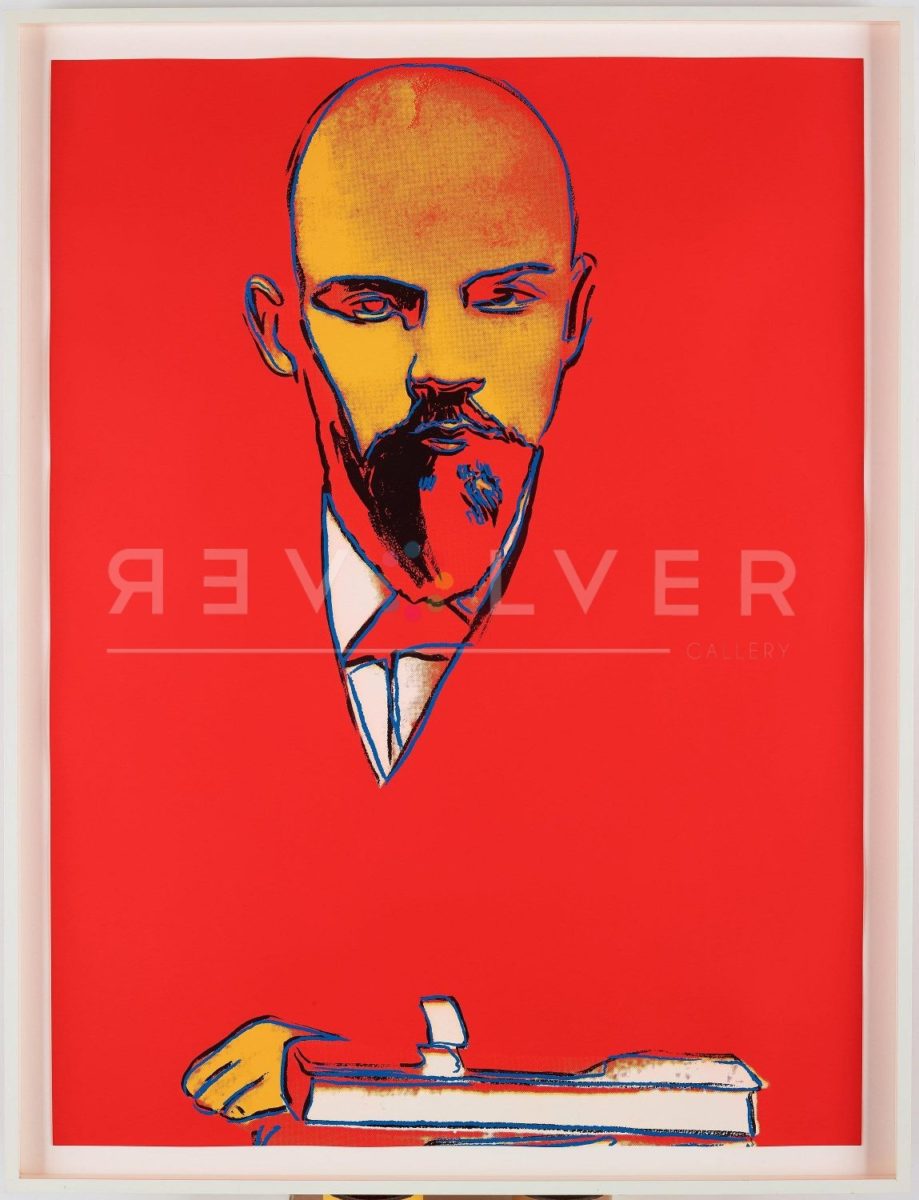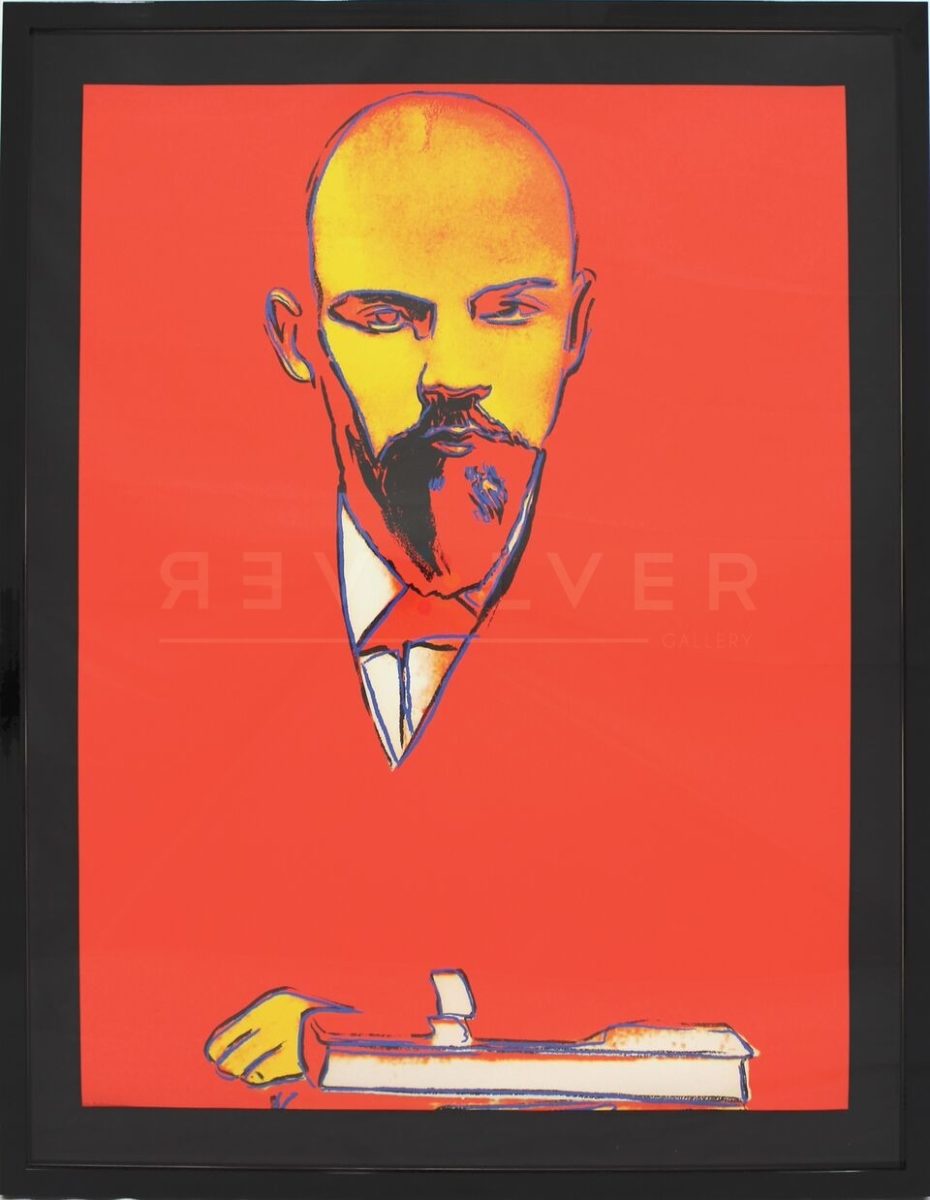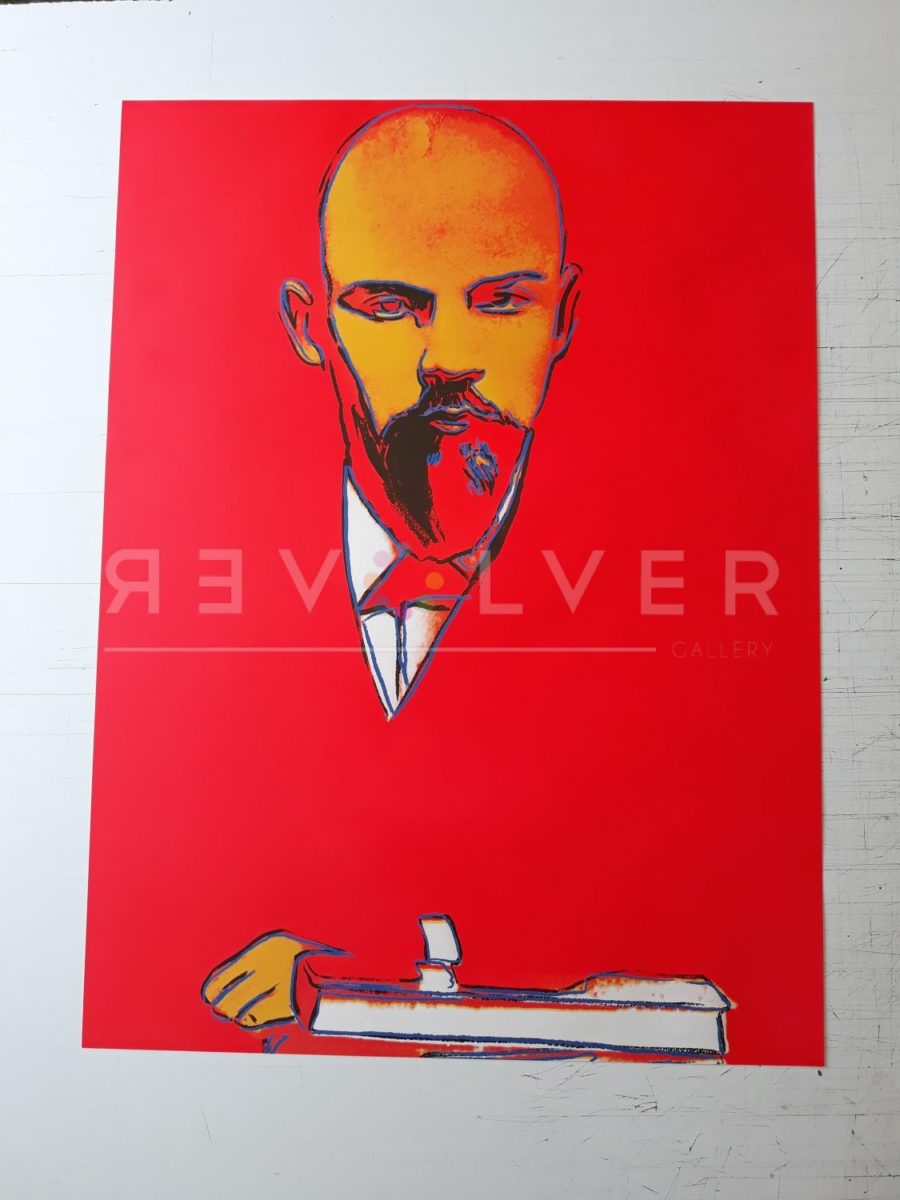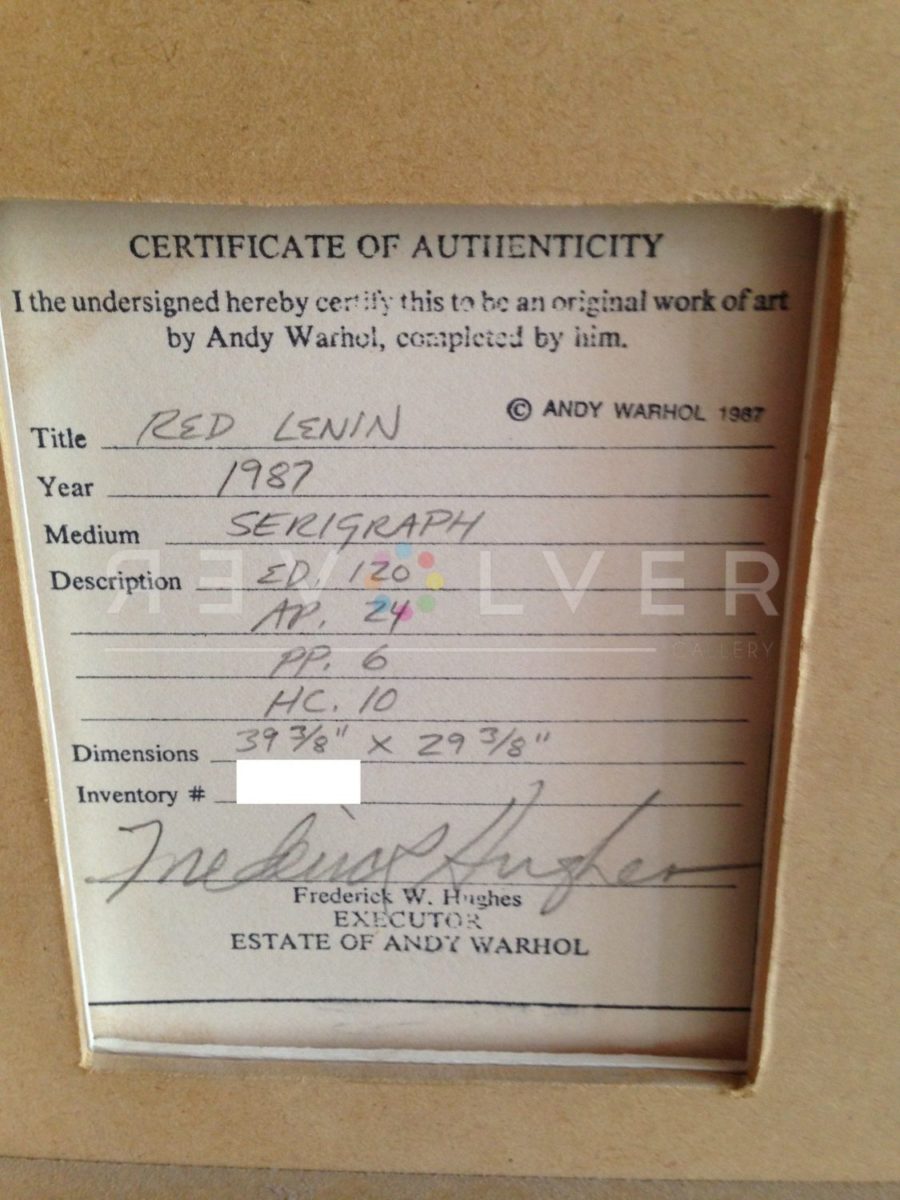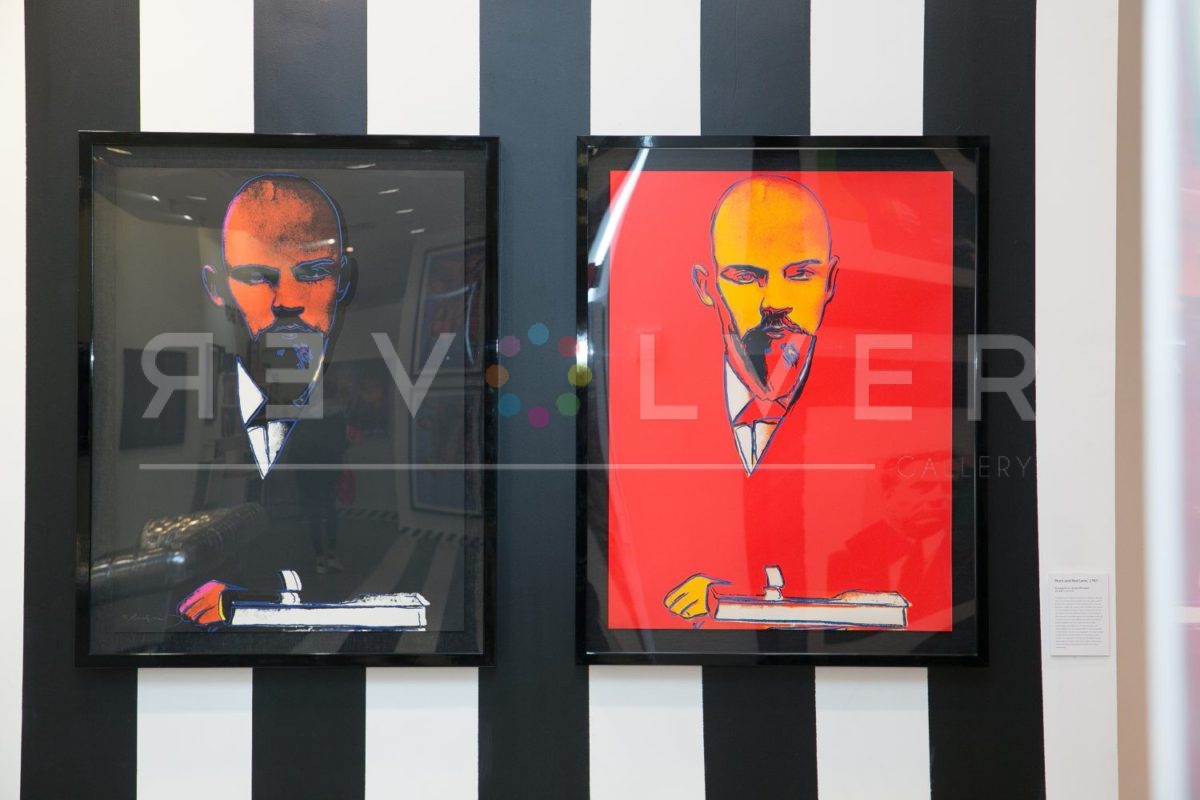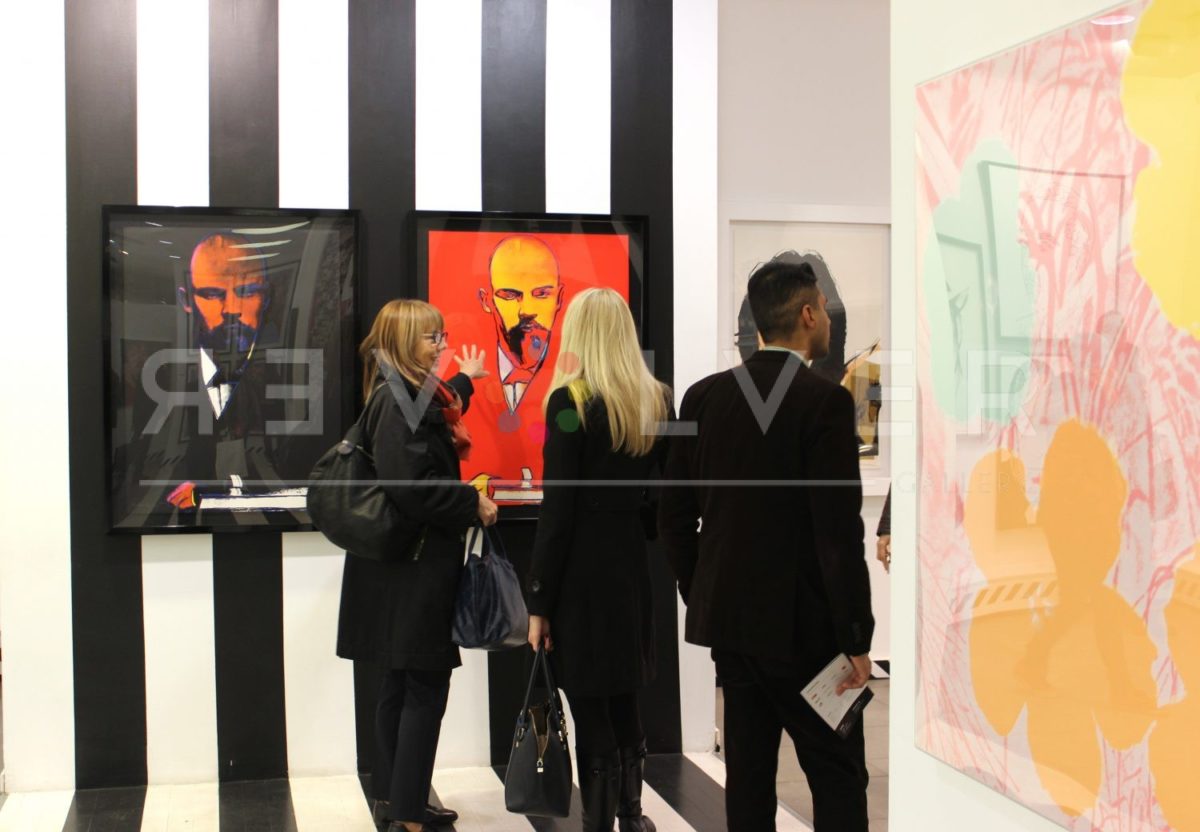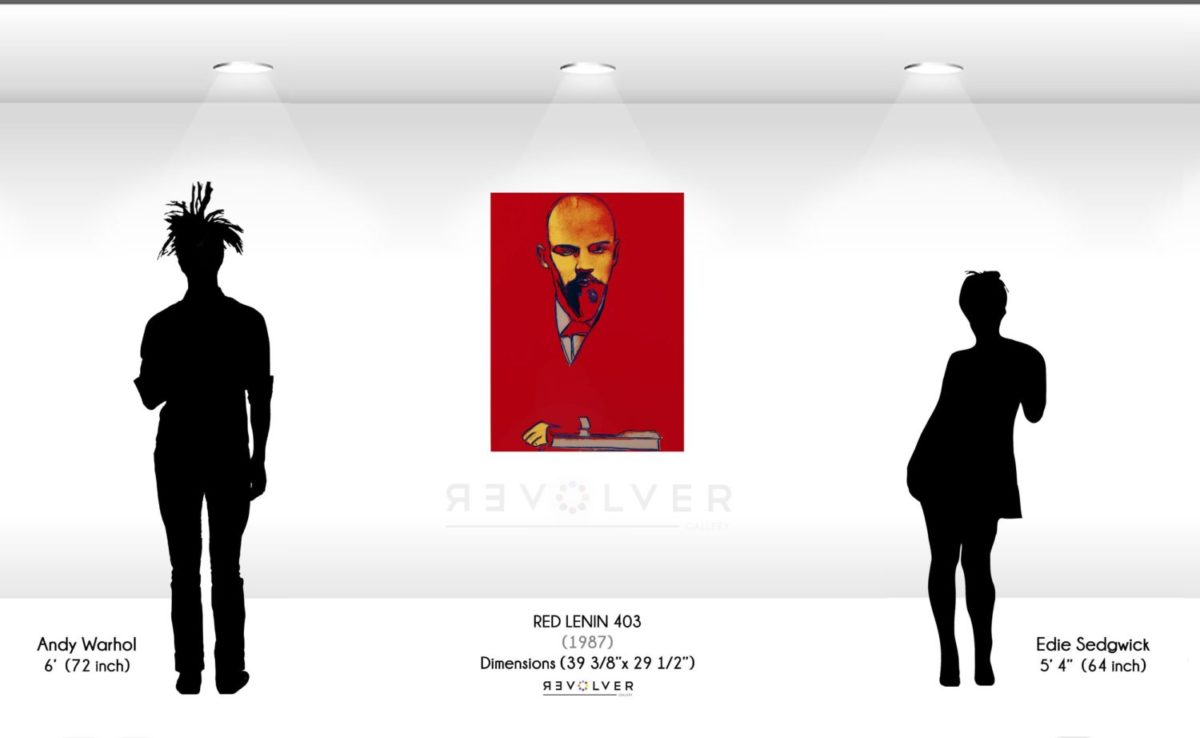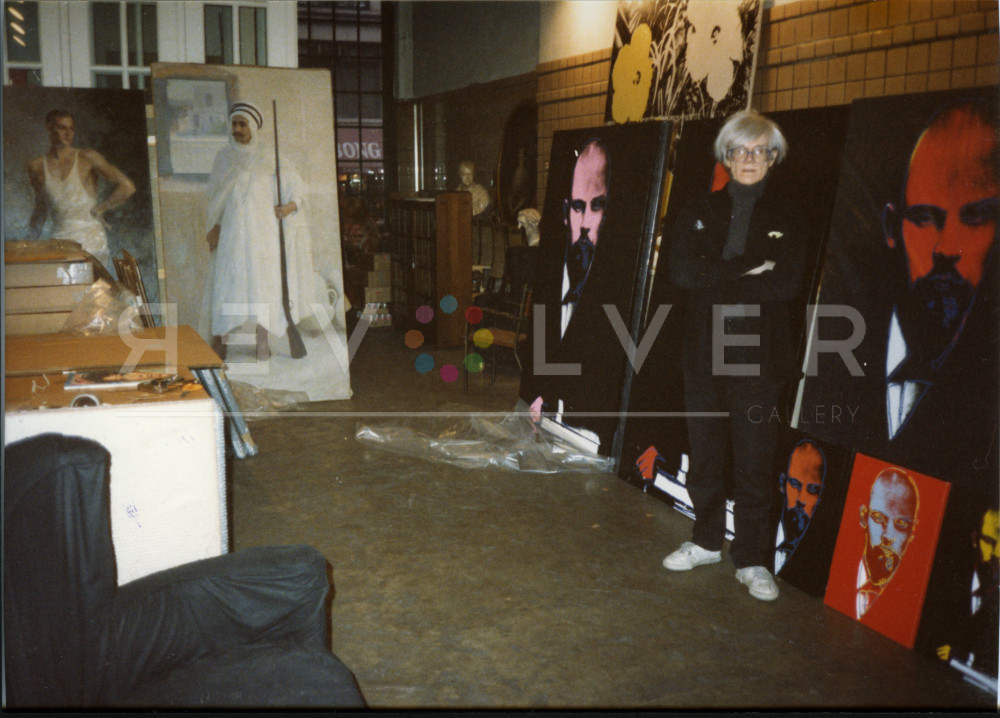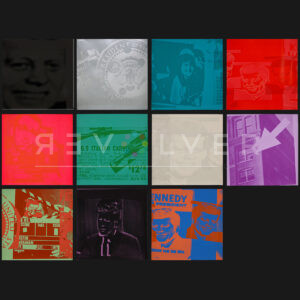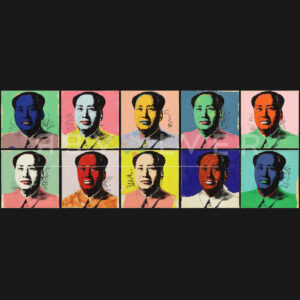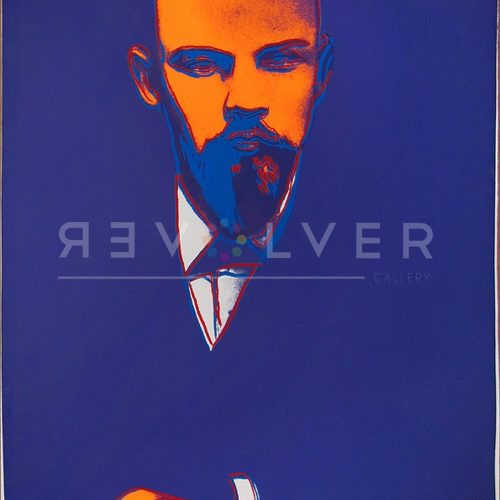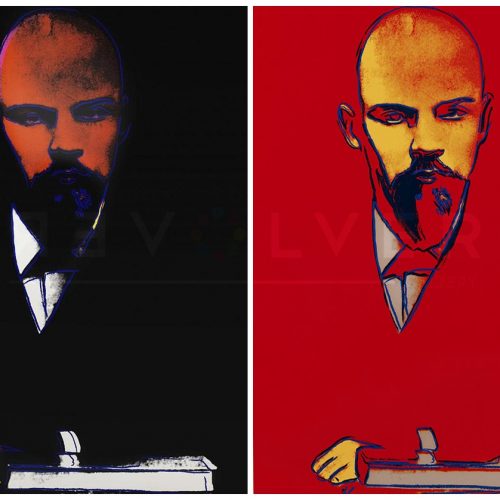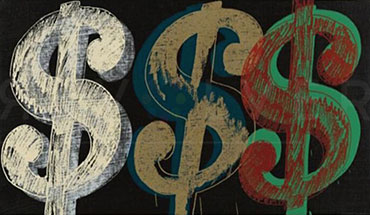Lenin 403 (“Red Lenin”) by Andy Warhol is a captivating screenprint created in 1987 as part of the Lenin print portfolio. Beyond its biographical importance as one of Warhol’s final projects, the series exemplifies his profound exploration of political figures alongside his renowned subjects. Inspired by a photograph of Vladimir Lenin, the Russian political leader, the “Red Lenin” print stands as a poignant testament to Warhol’s artistic evolution and his fascination with the interplay between communist imagery and American kitsch.
In this exceptional piece, Warhol’s approach diverges from the usual conventions that define his illustrious oeuvre. Against a striking deep red backdrop, Lenin’s commanding presence emerges with remarkable simplicity, skillfully crafted with minimal lines that draw our undivided focus to the political leader’s visage. Warhol deliberately omits extraneous details and colors, creating a mesmerizing portrait that challenges perceptions of politics and defies the artist’s own self-proclaimed shallowness.
Unlike many of Warhol’s renowned prints characterized by contrasting colors and intricate details, “Red Lenin” adopts a profound symbolism through the bold, crimson red that envelopes the entire composition. Only the yellow of Lenin’s face and hand, along with the gray of his collar and armrest, punctuates the intense red canvas, creating an arresting visual contrast. Through this artistic choice, Warhol invites viewers to contemplate not only the individuality of Lenin but also the profound impact of the revolutionary leader on history.
Photo credit: Andy Warhol in front of the Lenin works at his Factory, by Bernd Kluser, February 1987. Copyright Galerie Klüser.

